In no other country is religion so intertwined with every aspect of life and its cultural expressions-- be they music, art, dance, painting, sculpture, or architecture--as it is in India.
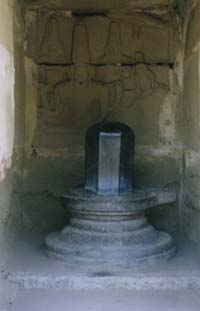
One cannot visit India without seeing a "lingam"-- it is virtually impossible! Phallic representations of Siva's creative role, "linga" are worshipped in town and countryside alike, by both rich and poor. Siva, the destroyer, is the agent of death and destruction, without which growth and rebirth (so important in Hinduism) could not take place.
Lingams are never found in open spaces but are always placed within some type of semi-enclosed shrine. According to some religious historians, these enveloping womb-like shrines suggest that the "lingam" is more than simply a representation of the phallus but is rather, when perceived in situ, the representation of the moment of generation itself.
Another ubiquitous representation of Siva is Nataraj, the cosmic dancer. Nataraj is often surrounded by an arch of flames. His dance shook the cosmos and created the world.
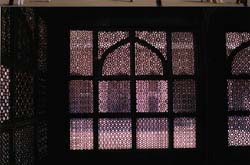
Temple architecture
is astounding.
Elaborate stone
screens like
the one seen here
are common.
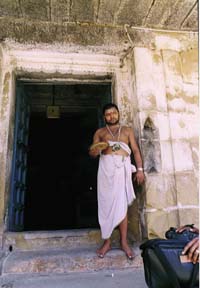
Priest (left) at the entrance of the temple he cares for. A lot of times these
positions are passed on from generation to generation, from father to son.
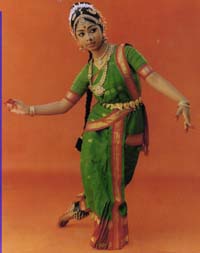 Every movement of the classical Indian dancer follows the intructions
prescribed in the Natya Sastra (written 2nd century BCE).
Every movement of the classical Indian dancer follows the intructions
prescribed in the Natya Sastra (written 2nd century BCE).
There are 67 hand gestures, 24 of which are single hand gestures and 13 double hand gestures, which are used for expression, or "Abhinaya," in dance parlance.
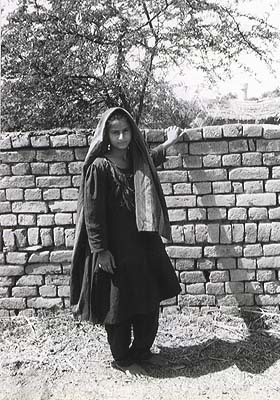 A TWILIGHT POEM
A TWILIGHT POEM
Indian dusk: cool half-lit eyes
stir the troubled soul to design.
A needed belief,
in the sullen throat of ruins.
If now, an old man's face
appears on the darkened ledge,
the whewing of the wind
fills one with dense exile.
You know of night, and what a seed,
a dead grandfather's face is like.
Across the shadows,
a water-buffalo wallows in the marsh ooze;
a naked boy calls:
his voice stumbling on his own body
drowsy with day-long cries of forbidding crows.
--Jayanta Mahapatra, 1976